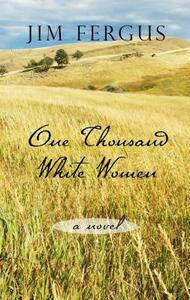You need to sign in or sign up before continuing.
Take a photo of a barcode or cover
2.5 stars: while I didn't hate this book, I didn't love it either. the main character had all the potential to be a truly strong woman, and you could tell the author wanted her to be that way, but many times it fell back into the stereotypical female role of the time period. However, there were moments where some genuine appreciation for the Cheyenne/Native American culture came through. those will be the most memorable moments from this book for me.
adventurous
challenging
informative
medium-paced
Plot or Character Driven:
Character
Strong character development:
Complicated
Loveable characters:
Yes
Diverse cast of characters:
Yes
Flaws of characters a main focus:
No
This book was interesting, a very creative historical fiction. I think the author did a good job of honoring Native culture and portraying the tragic history between Native Americans and white peoples in a realistic way.
Graphic: Colonisation
Moderate: Rape, War
I listened to the audiobook version so I don’t know if that is what colored my experience, but I found May to be an arrogant heroine—completely full of herself. Although she was also pragmatic about her situation, she never missed a chance to let everyone know how much they needed her and how important she was to the group—yuck!
I did enjoy several of the other quite colorful characters.
I did enjoy several of the other quite colorful characters.
I got about 20 pages into this book and became fed up with the terrible writing. The male author has not done a good job of figuring out how to convincingly write in the first person for a female character. Repetitive, heavy-handed, and with poor insight into the characters. No fun.
The author, Jim Fergus clearly states in the opening Author’s Note that in 1854 a prominent North Cheyenne chief proposed the exchange of white women brides for his tribe’s warriors. He explains that the premise for this novel, the “Brides for Indians” program actually never happened. However, the journal writings of May Dodd are quite believable, and I understand that many readers have been tricked into thinking this novel is based on actual events.
While the storyline is quite creative and captivating, I do have some criticisms to state here.
Firstly, this read leaves no doubt that it was written by a male author.
1. With few exceptions, the white women who went to live with the Cheyenne are a senseless foolhardy group of females. I was quite appalled at their apparent lack of brains.
2. The references to sex, including thoughts, experiences, and physical traits thereof are entirely too numerous and, in my opinion do not further the tale being told.
3. Lastly, but perhaps most importantly, to suggest that a woman would be released from a mental institution where she was being held against her will and give as little thought to her two very young children, Hortense and William, as May Dodd does is simply impossible. She writes them a note moves on with her life.
Secondly, there is no evidence in the bibliography that Fergus had any primary source to give credence to his portrayal of the Native Americans in this novel. This gives me reason to pause and question the validity of this text. Although it was an enjoyable to read, I cannot recommend it as a work that is genuine to the Cheyenne culture or mindset.
While the storyline is quite creative and captivating, I do have some criticisms to state here.
Firstly, this read leaves no doubt that it was written by a male author.
1. With few exceptions, the white women who went to live with the Cheyenne are a senseless foolhardy group of females. I was quite appalled at their apparent lack of brains.
2. The references to sex, including thoughts, experiences, and physical traits thereof are entirely too numerous and, in my opinion do not further the tale being told.
3. Lastly, but perhaps most importantly, to suggest that a woman would be released from a mental institution where she was being held against her will and give as little thought to her two very young children, Hortense and William, as May Dodd does is simply impossible. She writes them a note moves on with her life.
Secondly, there is no evidence in the bibliography that Fergus had any primary source to give credence to his portrayal of the Native Americans in this novel. This gives me reason to pause and question the validity of this text. Although it was an enjoyable to read, I cannot recommend it as a work that is genuine to the Cheyenne culture or mindset.
I found this book in a small bookstore on the Cape a few years ago. Although it took a little effort to get into the story, I found myself not being able to put it down. A wonderful and tragic story line full of historical information about the 1800's and the infiltration into the Native American tribes. This book is definately on my top 10 list.
A mesmerizing and intriguing tale of the strength and fortitude of women...and the despicable nature of "man." I was engaged with May's story from beginning to end and even questioned from time to time whether this book was really "fiction." I read some of this book in print and listened to some in audio and suggest sticking to print. I was disappointed in the audio narration and interpretation of the characters. In my opinion, the voices were all wrong and a bit too outlandish.
adventurous
challenging
dark
informative
inspiring
reflective
sad
tense
medium-paced
Plot or Character Driven:
A mix
Strong character development:
Yes
Loveable characters:
Yes
Diverse cast of characters:
Complicated
For the first 75 pages or so I loved this book. The true underlying story is fascinating and was new information to me. The "what if" scenario is pregnant (no pun intended) with possibility. That said, the historical inaccuracies and characterizations were so jarring and non-nuanced that it almost read like parody or farce - "A Connecticut Yankee in King Arthur's Court" or "Guliver's Travels" without the insight or the humor of Twain or Swift. This woman - no matter how progressive. open-minded, and highly-sexed - simply could not have lived in the time. It was like the author dropped Marlo Thomas into the 19th century. Mae's husband was a cardboard cut-out; in my minds-eye he was the Indian paddling down the river with a tear running down his cheek as he viewed what the white man had done to Mother Earth (a wonderful and iconic 30-second advertising image, even though the actor in it was not even a Native American, but too one-dimensional for a novel). I was also put-off by the oversimplified "white man bad red man good" approach. At this juncture no reasonable person could deny that what the US Government and the various churches did to Native Americans was an attrocity, an American Holocaust. That said, there were good men and women on both sides doing what they beleived was the right thing. To ignore that and turn this into a cartoonish battle between good and evil is simply silly and ultimately insulting to all the players.




